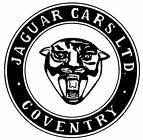
Jaguars proud boast was that they provided ‘ grace and pace’. In 1961 they backed up that boast with the perfect combination of looks and performance.
At the beginning of the 60’s Jaguar needed a quantum leap as the XK series, which had itself caused such a sensation in 1948, was fast approaching senility. Improvements such as disc brakes and a styling facelift had helped, but there was no disguising its great age.
In the experimental department chief test driver Norman Dewis was rushing around in a couple of prototype roadsters (cabriolets), as it had been intended originally to produce only an open car, but Bob Blake, a brilliant American sheet metal craftsman who worked closely with aerodynamicist, Malcolm Sayer, had other ideas. He took some welding rods and mocked up a ‘fast back’ superstructure on one of the open cars. Chairman Sir William Lyons happened to walk into the experimental shop at that moment. He looked at it in silence for some time. Finally he said “Its good, we’ll make it”.
March 16th 1961 is one of the most famous dates in Jaguar Chronology. It was then that the 31st Geneva Motor Show opened its doors to the public and there could be no doubt that the star of the event was Jaguars new 150 mph E-type sports car which was unveiled - in Coupe form.
Specification
Engine 4,235 cc (4.2 lt) straight 6-cyl.
Power 265 bhp @ 5400 rpm.
Transmission Manual 4-speed.
Chassis Monocoque cockpit.
Suspension Independent Front & Rear.
Brakes Dunlop Discs.
Top Speed 150 mph.
Acceleration 0 - 60 mph 7 seconds.
Rod’s silver ‘E’ type was built in the ‘60s. As can be seen from the brush painted Humbrol enamel body colour metallic paints were notoriously difficult to get right and remain so today, also the metallic paints seem to deteriorate more with age. The model features operating front steering by use of paper tubes and wire spindles, the height of modelling technology back in the late 1950’s. Also notable is the scratch built rear view mirror mount later copied by Ian in his racing version.
The other two models have the benefit of Halfords car paints and many more years of experience. Rods 2nd version, built in 1999, has a modified hood cover for its drop top. Bare metal foil has been used to enhance the trim and wheels along with ink washes to pick out the door and panel lines.
You can see more of Ian’s racing ‘E’ type in the Graham Hill collection.
RETURN TO -



